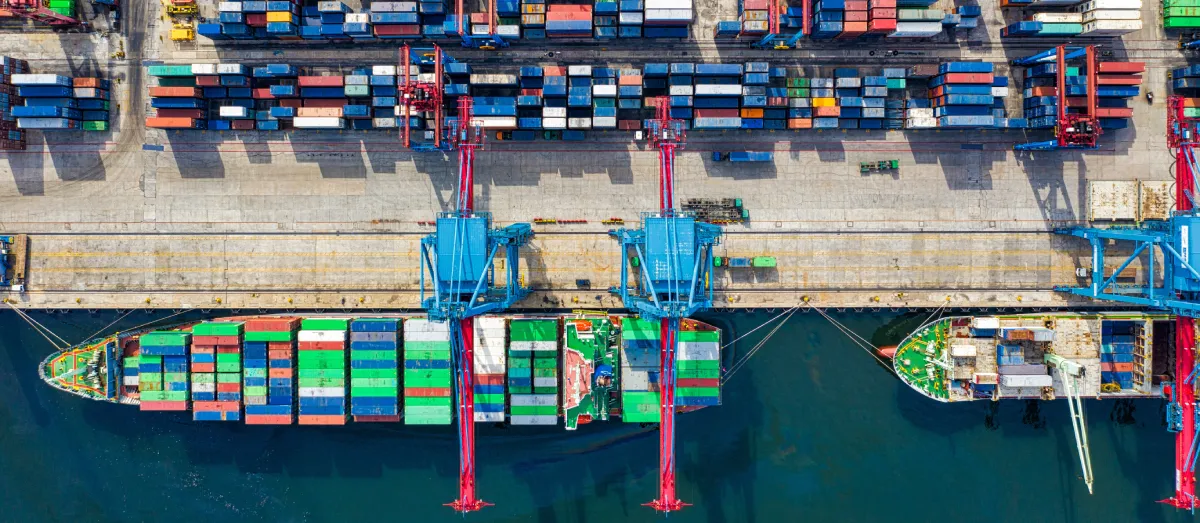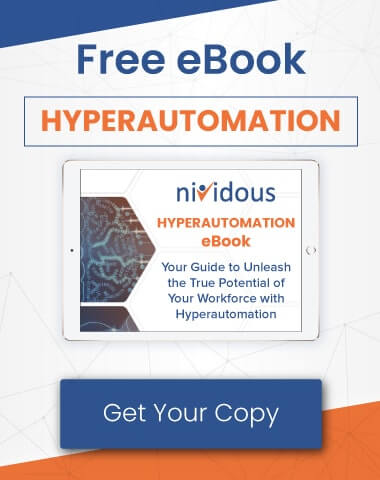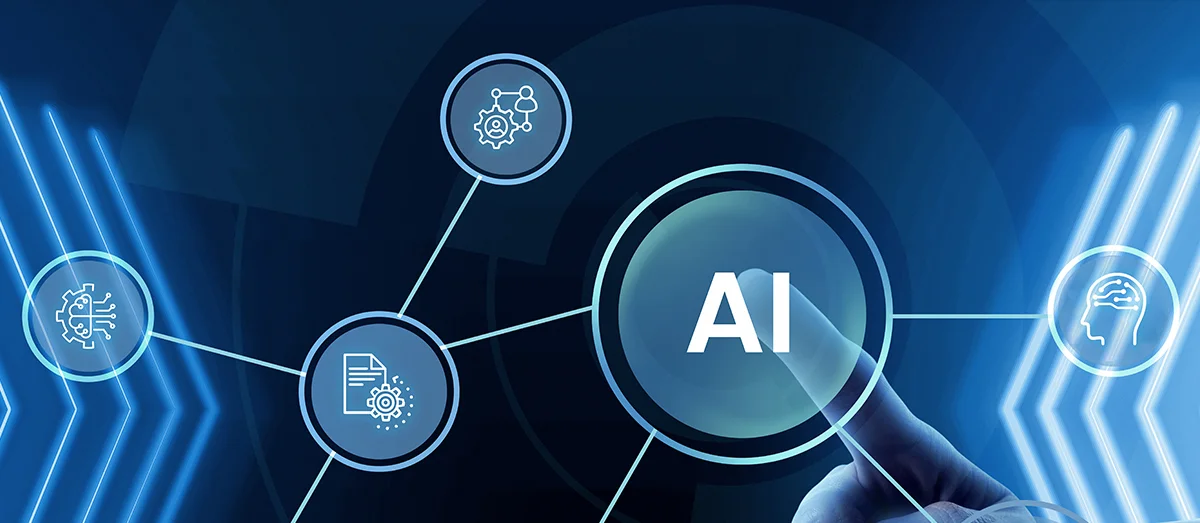As a vendor, how can you…
… be sure you’re getting the best rates possible when shipping products to retailers and consumers?
… eliminate hidden fees, navigate shipping delays, and keep customers happy?
… improve efficiency and eliminate the hassle and busy work associated with shipping products?
As a freight company, how can you…
… learn from shipping setbacks and create a stronger supply chain for the future?
The answers to these questions have eluded most vendors and freight companies in recent years as supply chain stress and global shipping crises have repeatedly made the news since the beginning of the COVID-19 pandemic. Shippers and transporters have so much on their plates that focusing on improvement and optimization can feel like a distant dream.
However, at Nividous, we have seen firsthand how the creative use of AI in the supply chain can not only solve existing problems but also prevent future ones. We’ve helped clients develop supply chain automation solutions that smooth out sticking points in complex scenarios, devise better shipping strategies, and dramatically improve efficiency.
Sometimes, however, powerful solutions require collaboration. That’s why we’re happy to highlight our partner TOTALogistix, whose CTO, Kris Pazhayanoor, imparted his expert knowledge for this article.
Below are a few of the most common problems faced by almost all freight companies or vendors, along with the AI and automation solutions that can solve these problems for good.
6 Problems Solved By Using Automation And AI In The Supply Chain
 Problem #1: Delays
Problem #1: Delays
“The supply chain has undeniably suffered from some very visible challenges over the past few years. People have noticed their packages arriving more slowly than usual and seen tall stacks of containers sitting in ports waiting to be unloaded,” Kris explains.
The visibility of these issues contributes to a lack of confidence in the supply chain—or in a specific shipping or logistics company—and can result in further problems when customers panic-buy additional supplies and add more stress to an already overburdened system. Or, worse, they may leave to work with another business.
 The Solution:
The Solution:
Several companies have started providing tools for supply chain businesses to be able to look inside individual processes to diagnose and solve problems. For example, says Kris, “freight providers can now track data connected to each shipping container to see the progress of shipments and monitor the congestion in major ports. Using that data, they can keep an eye on AI-powered predictions that warn of delays and provide advance notice of other issues.”
In addition to container tracking, there are several other fascinating predictive capabilities of logistics automation in the supply chain that vendors and freight companies can use to streamline their shipping processes, reduce delays, and keep costs low for consumers.
For example, digital twins—virtual models of real-world objects, processes, and scenarios—can help users visualize the supply chain in great detail to see specific points where improvement is needed. Advanced predictions from digital twins could help freight companies model more effective solutions and respond more efficiently to challenges such as port congestion, weather delays, and limited staff.
 Problem #2: Manual Shipment Tracking And Updates
Problem #2: Manual Shipment Tracking And Updates
This common logistics problem is perhaps best illustrated using one of Nividous’ past clients as an example.
This client had always taken great care to provide up-to-date tracking information to their customers. The problem: Accessing that information and transmitting it to the customer dashboard was a cumbersome process. An employee would have to:
- Log on to a variety of different shipping websites
- Search for a particular container
- Input the status and tracking information for that container into a spreadsheet
- Distribute the relevant information from the spreadsheet to the customer
Many logistics companies still use this method today. And worse, they often use the information contained in those master spreadsheets to inform major business decisions. In other words, the entire company’s direction may depend on the information an employee has essentially copied and pasted from a huge number of other sources. To say there is room for error during this process is an understatement.
 The Solution:
The Solution:
In this case, no advanced AI was needed; Nividous solved the problem quickly and simply with RPA bots.
Unlike employees, bots run 24 hours a day, seven days a week. They also never get fatigued or burned out from performing tedious tasks. They can run in the background forever, checking each shipping website, gathering the most recent information, and updating the company’s internal spreadsheet in near real-time. Additionally, they tend to catch status updates a human might have missed, especially if the updates happen overnight or during shift changes.
The bots Nividous set up for this client significantly improved turnaround for gathering and distributing shipping information, and they did it with 100% data accuracy. Missed updates and copy-and-paste errors became a thing of the past.
 Problem #3: Hidden Costs
Problem #3: Hidden Costs
With so many easily noticeable problems affecting the actual transportation of products, it can be easy for consumers to forget that shipping and logistics concerns can gum up the works and raise prices unnecessarily even before their products leave the warehouse. In fact, many businesses forget this too; they devote countless hours to developing high-quality products and carefully calculating margins, but fail to use the same care when choosing how to ship those products out into the world.
In particular, service charges are an area where most product suppliers spend far too much money.
“Service charges are the fees that occur on top of a standard shipping rate,” Kris explains. “For instance, if a B2B company ships to a residence instead of an office, or if a company opts to make a signature a requirement for delivery, those are special services that incur extra fees.”
Many shipping companies have gotten creative and reduced their standard freight charges but increased these special service charges to compensate. This allows them to keep their revenue high while making it appear as if shipping costs have actually gone down. Vendors who don’t have the knowledge or choose not to pay close attention while shipping products often wind up paying far more than necessary—and then have to pass those costs onto their customers or try to absorb them into already struggling margins.
 The Solution:
The Solution:
A small handful of specialist companies—such as TOTALogistix—provide AI-backed software for shippers to make more strategic freight choices. These better choices can dramatically speed up shipping times and keep prices lower both for the company and for their customers.
“AI software from TOTALogistix can help shippers audit not only their freight charges but their behaviors when it comes to shipping. Many shippers choose one service when another might have been more cost effective, while others may choose specialty services that aren’t necessary at all.”
For instance, “if a shipper is located in New York and ships next-day all over the country, they likely pay for next-day shipping regardless of where their customer is located. If a customer is in Boston, however, that’s well within the radius for a one-day delivery even for standard ground shipments. Eliminating those specialty next-day fees for customers within that radius could save the company a significant amount in shipping costs.
Additionally, many shippers aren’t aware that UPS charges extra fees for packages with the wrong dimensions listed. If a shipper isn’t weighing and measuring everything to an exact degree, perhaps relying on eyeball estimates, they’re probably paying extra fees for every single package they send.
AI-powered behavior audits can identify these issues—and countless others—and help shippers eliminate unnecessary spending.”

Ready to Transform Your Business with AI, NLP, and Automation?
Watch our on-demand webinar and discover how AI, NLP, and advanced cutting-edge automation technologies can supercharge your growth, streamline processes, and reduce costs.
 Problem #4: Inefficient load and shipping lane choices
Problem #4: Inefficient load and shipping lane choices
Shipment optimization is a huge part of running a successful logistics company. The company needs to minimize the number of empty trucks on the road; it also needs to make sure a truck is always available to accept a load in times of high demand. To make matters more complicated, each truck and shipping lane should be chosen carefully based on a number of factors such as location, load type, load size, and freight rate.
At the end of the day, an inefficient shipping company is leaving money on the table and putting their competitive advantage at risk. Customers may prefer to work with more efficient companies that can afford to offer lower fees and promise faster shipment times.
The problem is that most of these important decisions are still being made manually by many shipping companies. An employee often has to log into a website to search for loads, shipping lanes, and other freight information. Then, he or she has to assign trucks to loads and shipping lanes that make sense. This is a slow and tedious process even when it works well.
To make matters more complicated, some of these shipping lanes are in high demand from other shipping companies and disappear almost the instant they appear to be available. This means it’s very possible for a shipping company to miss out on the most efficient lanes and have to settle for subpar choices simply because an employee didn’t check the data at the right time or hesitated for a moment too long.
 The Solution:
The Solution:
Nividous has worked with a client that was experiencing exactly the problems described above. As it turned out, this was another problem solved simply and easily with automated bots.
Now, instead of having to send an employee to a website to manually check for loads, trucks, and available lanes—and make critical decisions with split-second timing—a bot handles these tasks. The bot checks each data update for the most efficient criteria, snags shipping lanes before they’re lost to competing companies, and assigns nearby trucks to pick up the load while minimizing the number of miles the truck must travel empty.
 Problem #5: Cumbersome Paperwork Processes
Problem #5: Cumbersome Paperwork Processes
Many shipping companies receive orders via email. Since every client has their own format and wording for sending emails, employees are often stuck sorting through all these incoming orders and converting them to a more standardized format.
Nividous has worked with a chemical transport company with this exact issue. Employees would check the company’s email inbox, sort incoming information, and transcribe it into the company’s central order database in the form of a sales order. From there, they scheduled transport and arranged for any special equipment the particular chemical might require.
This process was 100% manual, so employees often became fatigued and their work was prone to errors. These errors led to inefficiencies, and also set the stage for potential safety hazards.
 The Solution:
The Solution:
We created a bot that handles the entire process quickly and accurately:
- It checks the company’s email inbox on a regular basis for incoming work orders.
- It converts work orders to sales orders and enters them into the company’s database.
- It checks the criteria for making a safe transport of the chemical in question and arranges all the necessary safety equipment at loading and unloading points.
- It generates a detailed PDF and places it in a shared directory so human employees can double-check the work and make any changes if necessary. This PDF also contains all the relevant customer records, including bills of lading, the original work order, and any other paperwork that must be saved.
- It prints the PDFs overnight so workers have them fresh and ready to go first thing in the morning. These printed PDFs can be handed to the drivers so everyone stays on the same page—and so drivers don’t have to deal with electronic systems while they’re out on the road.
 Problem #6: Portal Hassles And Other Time-Wasters
Problem #6: Portal Hassles And Other Time-Wasters
Most companies that create products care far more about building the best product possible, marketing to consumers, and thinking of new, innovative ways to grow than they do about shipping. So when freight companies, retailers, and every other contact point along the way all expect vendors to fill out extensive forms to transfer products, that stack of paperwork feels like nothing but a hassle.
It’s true—the workload of filling out a form for every single interaction on every single product is a significant burden. Retailers often want vendors to select individual part numbers—and of course, every retailer has a different system for numbering these parts—as well as exact quantities of items inside each pallet and other specific information for every shipment.
This burden is made worse by the fact that most of these third parties require users to submit forms through closed portals without any public-facing APIs. That means automating these submission processes in the traditional sense is challenging for the average vendor.
 The Solution:
The Solution:
Imagine cutting out hundreds of wasted hours spent filling out forms and using that time for something productive instead. It is possible, despite what many vendors think. When retailers don’t provide APIs, automating their proprietary portals and forms simply requires some special knowledge and expertise.
“This is where the partnership between Nividous and TOTALogistix really shines,” Kris says.
Nividous and TOTALogistix have combined their efforts to provide AI-powered automation for situations such as these that resist run-of-the-mill automation.
With advanced automation capabilities that combine robotic process automation (RPA) with AI-powered technologies including natural language processing (NLP), intelligent document processing (IDP), and even the automation of processes involving human elements (business process automation, or BPM), Nividous specializes in solving complex problems for companies. TOTALogistix, in turn, provides companies the valuable data they need to make informed shipping decisions.
“Together, TOTALogistix and Nividous offer vendors a faster and easier way to handle shipping-related forms and portal interactions.”
These solutions are just the beginning.
Solve the above problems—and countless other shipping and logistics issues—with AI from Nividous.





